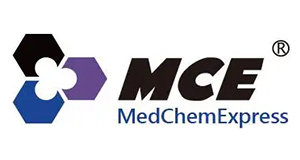Harman-13C2,15N, CAS 1189461-56-0
Harman-13C2,15N, CAS 1189461-56-0
SKU
MEXHY-W777360-0
Packaging Unit
Get quote
Manufacturer
MedChemExpress
Availability:
loading...
Price is loading...
Product Description: Harman-13C2,15N is 13C and 15N labeled Harmane. Harmane is a benzodiazepine receptor inhibitor (IC50=7 μM), with IC50 values for mACh, Opioid Receptor, MAO-A/B, and α2-adrenergic receptor of 24 μM, 2.8 μM, 0.5 μM, 5 μM, and 18 μM, respectively. Harmane also inhibits haloperidol and serotonin, with IC50 values of 163 μM and 101 μM, respectively. Harmane inhibits the I1 imidazoline receptor (IC50=30 nM) to reduce blood pressure and has antidepressant, anti-anxiety, anticonvulsant, and analgesic effects. Harmane inhibits dopamine biosynthesis by decreasing tyrosine hydroxylase (TH) activity and enhancing L-DOPA-induced cytotoxicity in PC12 cells. Additionally, Harmane can increase the mutagenic effect induced by 2-acetylaminofluorene (AAF)[1][2][3][4][5][6].
Applications: COVID-19-immunoregulation
Formula: C10 13C2H10N 15N
References: [1]Russak EM, et al. Impact of Deuterium Substitution on the Pharmacokinetics of Pharmaceuticals. Ann Pharmacother. 2019 Feb;53(2):211-216./[2]Musgrave IF, et, al. Harmane produces hypotension following microinjection into the RVLM: possible role of I(1)-imidazoline receptors. Br J Pharmacol. 2000 Mar;129(6):1057-9./[3]W E Müller, et al. On the neuropharmacology of harmane and other beta-carbolines. Pharmacol Biochem Behav. 1981 May;14(5):693-9./[4]Glover V, et, al. β-Carbolines as selective monoamine oxidase inhibitors:In vivo implications/[5]E D Louis, et al. Harmane induces anxiolysis and antidepressant-like effects in rats. Ann N Y Acad Sci. 2005 Aug 9;65(3):391-6./[6]Umezawa K, et, al. Comutagenic effect of norharman and harman with 2-acetylaminofluorene derivatives. Proc Natl Acad Sci U S A. 1978 Feb;75(2):928-30./[7]Yoo Jung Yang, et al. Effects of harman and norharman on dopamine biosynthesis and L-DOPA-induced cytotoxicity in PC12 cells. Eur J Pharmacol. 2008 Jun 10;587(1-3):57-64.
CAS Number: 1189461-56-0
Molecular Weight: 185.20
Research Area: Inflammation/Immunology;Neurological Disease
Target: Adrenergic Receptor;GABA Receptor;Imidazoline Receptor;Isotope-Labeled Compounds;Monoamine Oxidase;nAChR;Opioid Receptor
Applications: COVID-19-immunoregulation
Formula: C10 13C2H10N 15N
References: [1]Russak EM, et al. Impact of Deuterium Substitution on the Pharmacokinetics of Pharmaceuticals. Ann Pharmacother. 2019 Feb;53(2):211-216./[2]Musgrave IF, et, al. Harmane produces hypotension following microinjection into the RVLM: possible role of I(1)-imidazoline receptors. Br J Pharmacol. 2000 Mar;129(6):1057-9./[3]W E Müller, et al. On the neuropharmacology of harmane and other beta-carbolines. Pharmacol Biochem Behav. 1981 May;14(5):693-9./[4]Glover V, et, al. β-Carbolines as selective monoamine oxidase inhibitors:In vivo implications/[5]E D Louis, et al. Harmane induces anxiolysis and antidepressant-like effects in rats. Ann N Y Acad Sci. 2005 Aug 9;65(3):391-6./[6]Umezawa K, et, al. Comutagenic effect of norharman and harman with 2-acetylaminofluorene derivatives. Proc Natl Acad Sci U S A. 1978 Feb;75(2):928-30./[7]Yoo Jung Yang, et al. Effects of harman and norharman on dopamine biosynthesis and L-DOPA-induced cytotoxicity in PC12 cells. Eur J Pharmacol. 2008 Jun 10;587(1-3):57-64.
CAS Number: 1189461-56-0
Molecular Weight: 185.20
Research Area: Inflammation/Immunology;Neurological Disease
Target: Adrenergic Receptor;GABA Receptor;Imidazoline Receptor;Isotope-Labeled Compounds;Monoamine Oxidase;nAChR;Opioid Receptor
| SKU | MEXHY-W777360-0 |
|---|---|
| Manufacturer | MedChemExpress |
| Manufacturer SKU | HY-W777360-0 |
| Package Unit | Get quote |
| Quantity Unit | STK |
| Product information (PDF) | Download |
| MSDS (PDF) |
|

 Deutsch
Deutsch






